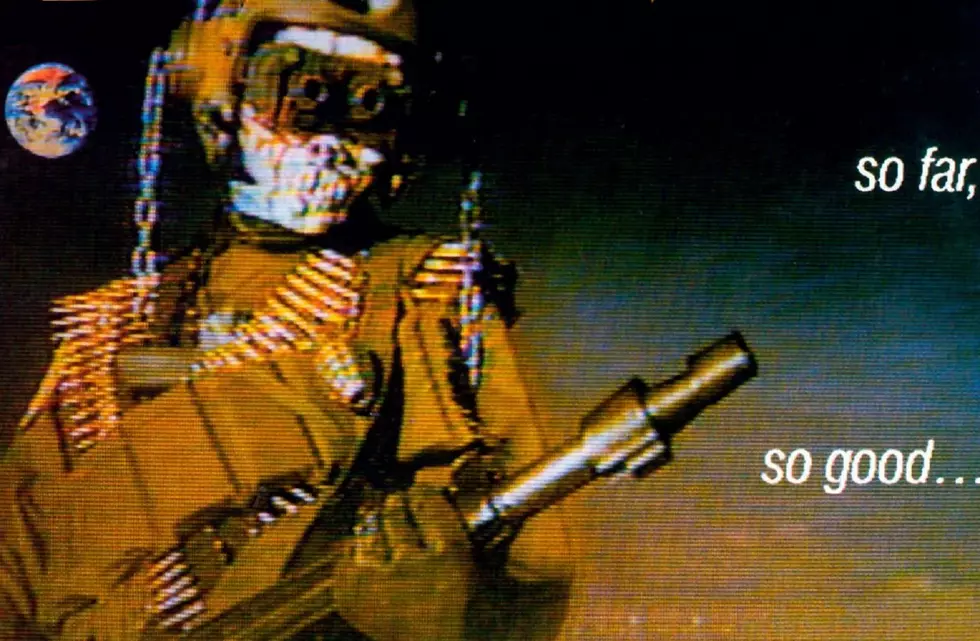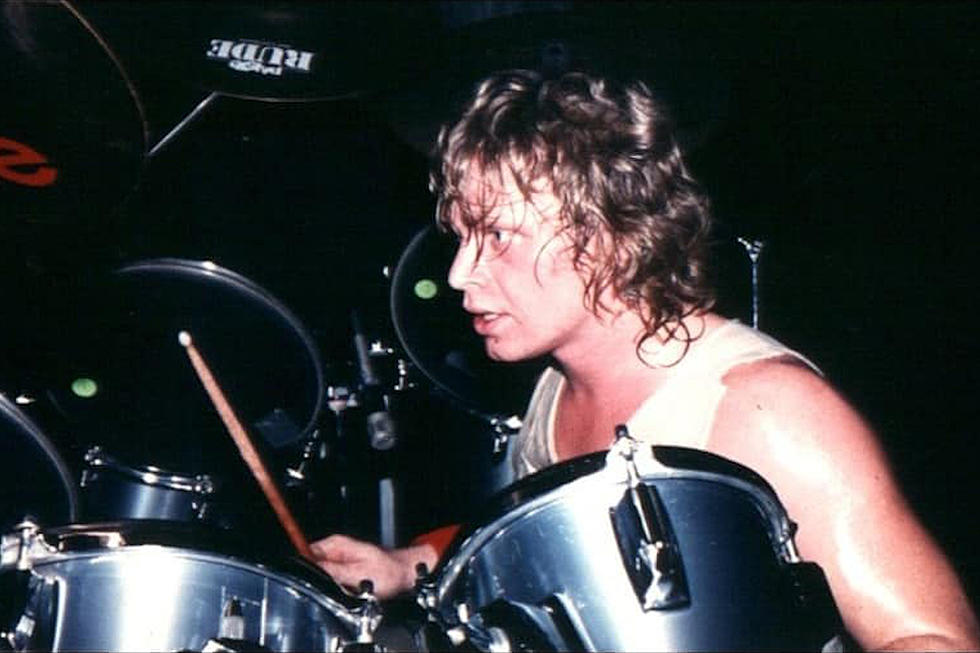
Why Megadeth Struggled Through ‘So Far, So Good … So What!’
Having seriously stepped up their game on Peace Sells … But Who’s Buying? in 1986, Megadeth were poised to make a run at the thrash-metal crown on the follow-up. Unfortunately, things fell apart quickly following the tour in support of the record, leaving So Far, So Good … So What? a patchwork of the best – and worst – of the band upon its release on Jan. 19, 1988.
The immediate aftermath of the Peace Sells … tour saw guitarist Chris Poland and drummer Gar Samuelson fired by frontman Dave Mustaine due to the “consequences of their drug use,” as Mustaine explained in his 2010 autobiography, Mustaine: A Heavy Metal Memoir. The two had been pawning their equipment to fund their various drug addictions, and the situation had become untenable.
Samuelson’s drum tech, Chuck Behler, took over the spot behind the kit, while Jay Reynolds of the Portland, Ore., band Malice was tapped to fill Poland’s spot. Neither would work out in the end, but Reynolds didn’t even make it to a record. While the group was writing and recording So Far, So Good … So What!, he became a liability when he couldn’t play the solos in the studio without the aid of his guitar teacher, Jeff Young.
So what did Megadeth do? The nixed Reynolds and hired Young. “In retrospect, the substitution of Jeff for Jay was a personnel issue that could have been handled better,” Mustaine wrote in his book. “I basically called Jay up and told him he was out – before he’d even been in. It was cold and bloody, and I regret the way I did it. But these types of decisions just naturally fell on my shoulders; no one else wanted the responsibility.”
The lineup was set. How it would play out in the studio, with musicians pulled into the fray haphazardly, So Far, So Good … So What? was going to be a difficult structure to build, and quickly at that, with the record-company deadline for the album fast approaching. There were some bright spots, including “In My Darkest Hour” – though it was borne out of tragedy. Mustaine was inspired by the death of Cliff Burton, an ex-bandmate in Metallica who was killed in a bus accident in 1986.
“A friend of mine called me to tell me that he had been in a bus accident,” Mustaine wrote. “I took it really personal because, I figured, ‘You fuckers, you know we're all brothers in a band and he dies and you have someone else call me?’ So I took it very, very, very bad.”
“Set the World Afire” is a classic thrash stomp, starting off with a sample of "I Don't Want to Set the World on Fire" by the '40s vocal group the Ink Spots. The song was actually the first post-Metallica composition Mustaine worked on, after discovering a handbill from California Sen. Alan Cranston while on a cross-country bus journey after he was fired from Metallica. The handbill warned of the spread of nuclear arms, and included the word “megadeath.” Mustaine dropped the second “a” and titled the track “Megadeth,” which later became the name for his new project, while the song turned into “Set the World Afire.”
Listen to Megadeth Perform 'In My Darkest Hour'
“Hook in Mouth” – which bassist David Ellefson, according to his 2014 memoir, My Life With Deth, wrote the main riff to while the band was still searching for a second guitarist – later shared its name with a limited-edition 2013 red blend of wine from Mustaine Vineyards.
One of the songs that looked to be a hit, at least on paper, turned out to be a dud, despite the star power involved. Sex Pistols guitarist Steve Jones guested on a cover his ex-band’s most well-known track, “Anarchy in the U.K.” Mustaine mangled the lyrics, Jones had a cast on his arm while playing the solo and critics lambasted the attempt as being too rigid and lacking the sloppy charm of the original.
"I don't think I changed the lyrics too much, but I couldn't understand Johnny Rotten's marble mouth,” Mustaine told Rolling Stone. “You know in the end when he says 'another council tenancy,' I thought he said ‘cunt-like tendencies.’ I could have swore he did.”
Some of So Far, So Good …S o What! does feel forced and stilted. From the muddled ode to being chased by law enforcement, “502,” to the vicious personal attack on Poland in “Liar,” some refinement was needed. But part of the reason was the lack of chemistry among the members of Megadeth at the time.
“You gotta understand, I didn’t rehearse with this band,” Young said during his podcast Music Without Boundaries. “Think what I could’ve done if I actually could’ve, like, listened to the songs for a week or a couple weeks, rehearsed with them – like, let the things evolve and bloom. Everything I did on that album was just off the cuff.”
Young and Behler would be ousted by Mustaine following a disastrous tour for So Far, So Good … So What! where the band canceled a leg in Australia and was forced to abort the 1988 Monsters of Rock tour after Ellefson’s battle with heroin led to a stint in rehab. One positive outcome, at least for Mustaine, was the fallout he experienced over the record.
“It was after So Far, So Good that I began to develop thicker skin,” he said. “I’d been king of the sound bite up to that point, and while I tried not to let a few bad reviews color my view of an entire industry or affect my attitude with regard to marketing and publicity, they certainly had an impact. I began to tune out the reviews and focus more intently on the fans of Megadeth and how they responded to our music.”
Rockers With Hidden Talents
More From Ultimate Classic Rock









